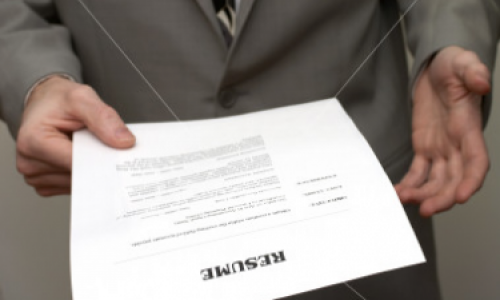
Most Important Items First
When you first learned how to create a resume, you may have been told that items must be placed in chronological order. This would apply to work history, education, volunteer experience and other accomplishments. While this is acceptable -- setting up your resume chronologically can work great -- you are free to organize your resume in other ways too. In fact, often you can achieve a more fulfilling effect by placing items based on importance or relevance to the job.
And this applies to more than just items under each section. It also applies to the positioning of the headers themselves. For example, on a two-page resume, place the most important sections on the first page. Employers may not even get to the second page if you don't entice them enough.
Stay Relevant To the Job
As you gain experience from various jobs, you will have a large list of what you can put on your resume -- charting back to the days you mowed your neighbour's lawn or your part-time job at the grocer. Certain employers may be disinterested in reading your entire work history though. Make sure the items you highlight on your resume are relevant to the job and are up-to-date. If during this time you find you don't have any related experience, however, don't panic. This is a great opportunity to use the technique of the transferable skill, explained in Bridging Online. It may also be a good time to start volunteering!
Keep Presentation Consistent
How do you feel when surfing through a website, only to find items on it are oddly located from page to page or do not line-up properly? What's the first thought that comes to mind?...maybe, "unprofessional" or "unorganized"? That's the exact same thought employers get when they see resumes that look like they've been put together with minimal effort. For an employer to even consider your resume as legitimate, it must be consistent throughout -- no matter what style you choose. Depending on your approach, you may also want to keep the same look and feel for all of your work search documents. For some, this could be a standard header on your cover letters and resume, or using the same font and colour scheme for all your portfolio items.
No Templates!
Generic is always boring -- especially for an employer sifting through resumes. When employers peruse dozens of resumes at a time, you might be surprised just how many they see using the same layout and headings. It's quite frightening! When creating your resume, don't be afraid to use samples and other resumes as guidelines and sources of ideas; never copy them exactly though. Using a template from the web, or one from your business class or MS Word may be a great starting point, however you should consider customizing it so as not to turn off a potential employer.
Be Creative and Unique
Unlike cover letters, there aren't any strict guidelines for what you must include or how you must construct your resume. Feel free to be as creative and unique as you'd like (NB: please be sure to note the next point though). This goes for headings, formatting and the order of your sections -- with resumes, there are no rules! And plus, employers love to see you've put in the extra effort to make your resume stand out. Remember: if employers are indifferent to your resume at first glance, the chances of them paying much more attention to it, or you, is slim.
Electronic or Hardcopy? Black & White or Colour?
While you are encouraged to get innovative and artistic with your resume, always keep in mind how employers will read it and what the corporate culture of their organization is. Will it be read as a hardcopy or on the computer screen? Will it be scanned in black and white or in colour? Should it even be in colour? Should it have a funky logo and wavy lines, or should it be more formal and "traditional"? These are all questions you must ask yourself before creating your resume.
Don't submit your hard work to an organization before knowing what their methods of reading it are and researching what the company stands for. It would be a shame for employers to overlook you because you used a font their scanner doesn't recognize or because your tone and that nifty logo is not what the organization considers "professional."
Use the STAR Formula
Using the STAR formula is the most effective way to communicate your accomplishments to an employer. STAR stands for Situation-Task-Action-Result. Often on a resume, the situation, task and action are expressed but the result is ignored. The result is perhaps the most important of them all though. When writing your accomplishment statements, ask "so what?" after each line. If the importance is unclear, make sure to rewrite it in more detail. Your accomplishments are more than just what you did. It's their result and the significance of them that makes them "accomplishments."
Example: "Edited academic articles for the monthly newsletter..." -- so what? -- "...helped reduce jargon allowing the general public to understand more clearly"
No Creativity, No Impact, No Interview
If your resume is vague, uninteresting and standardized, you will most likely have an unimpressed employer on the other end. No creativity, no impact, no interview: keep this mantra in mind next time you're updating your resume.
It's integral when preparing and developing any communication pieces to always consider how the employer will respond. If you believe your resume might be a little dull in the eyes of an employer, it may be time to liven it up. Even if you're applying for a government position, your resume doesn't have to be boring. Make sure your resume reflects the best of you!
Beyond the Blog
-
Think your resume might need an update? Want to learn more about how to do this? Drop into upcoming Resume Workshops offered throughout the semester.
-
Don't forget your friend Career Services for your resume needs. Career Services offers one-on-one advising, workshops and more!












